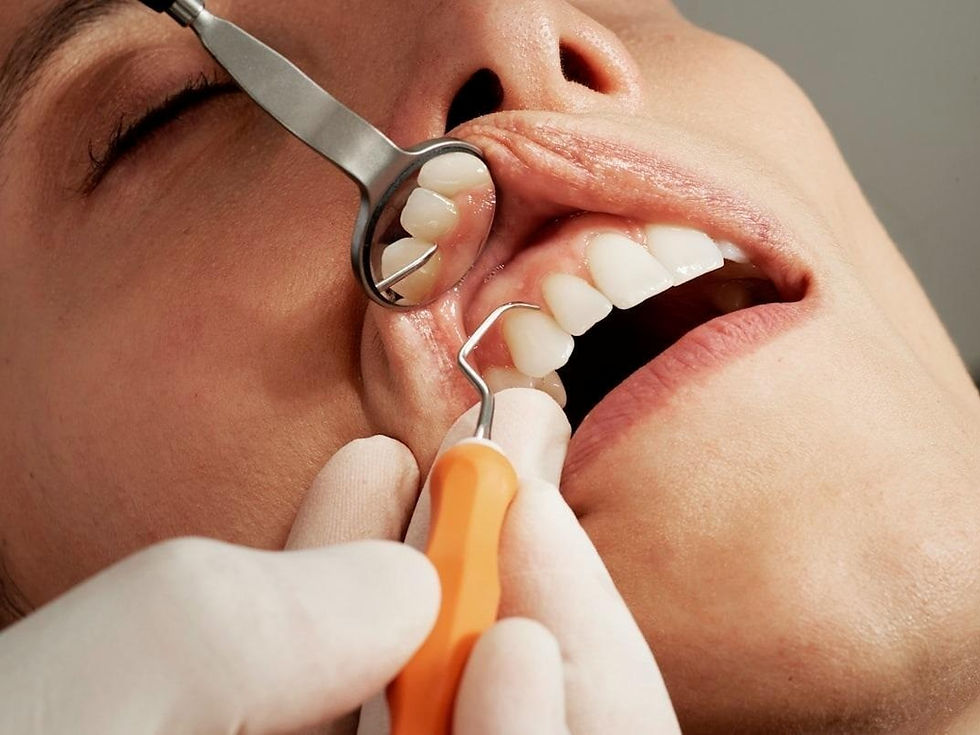10 Common Mistakes To Avoid When Using Dental Cements
- trevor8733
- 3 days ago
- 3 min read

Even the best materials can’t compensate for improper technique. Dental cements are critical for long-lasting restorations, but their effectiveness depends on following precise protocols. Below, we explore 10 common cementation errors, the consequences they can cause, and how to avoid them using guidelines drawn from Dentonics cement products’ Instructions for Use (IFUs).
1. Inadequate Isolation and Moisture Control
Failing to maintain a dry field is one of the most frequent mistakes made during cementation. This issue leads to compromised durability and longevity.
Problem: Saliva, blood, or excess moisture can interfere with bonding, especially with resin-based cements. This often leads to compromised adhesion, microleakage, or premature debonding.
Solution: Follow IFU recommendations for isolation techniques. Use rubber dams, cotton rolls, and high-volume suction. For moisture-sensitive cements, ensure the tooth is properly dried without desiccating dentin.
2. Incorrect Mixing Ratios or Incomplete Mixing
Improper mixing of two-component systems is a subtle but significant mistake.
Problem: When automix systems aren’t purged or hand-mixed cements aren’t blended thoroughly, the result is inconsistent curing and weak mechanical properties.
Solution: Dispense and mix materials exactly as specified in the IFU. For automix syringes, express a small amount before application to ensure a uniform mix.
3. Using the Wrong Cement for the Indication
Not all cements are created equal. Using the wrong one can compromise the entire restoration.
Problem: Using temporary cement for permanent cases, or selecting a low-retention cement for a short prep, can result in early failure.
Solution: Reference the IFU and product guidelines to match the cement type to the clinical indication. Dentonics offers specific products for dental crown cementation, veneers, posts, and temporary restorations.
4. Overloading or Underloading the Restoration
How much cement you apply matters.
Problem: Excess cement can cause improper seating or overflow, while under-application may result in poor coverage and weak bonding.
Solution: Follow the IFU for the recommended cement volume. Apply an even, thin layer over the entire internal surface of the restoration for optimal contact.
5. Improper Tooth Surface Preparation
Skipping critical prep steps reduces cement effectiveness.
Problem: If the prep is contaminated or not properly conditioned, adhesion is compromised, especially with adhesive or self-etch resin cements.
Solution: Clean the tooth with pumice, etch or prime as directed, and avoid over-drying dentin. IFUs from Dentonics cement products detail exact conditioning steps per material.
6. Inadequate Seating Pressure or Technique
Rushing or improper seating leads to voids or poor margins.
Problem: Weak seating pressure or an uneven press can result in internal gaps, marginal leakage, or poor occlusion.
Solution: Seat restorations using firm, even pressure. For crowns or inlays, instruct the patient to bite on a cotton roll or use finger pressure as specified in the product instructions.
7. Not Following Working and Setting Times
Timing is everything with dental cements.
Problem: Applying or seating the restoration too late in the working time may compromise adaptation, while disturbing it during setting can weaken the final result.
Solution: Be aware of temperature and humidity, which affect working time. Begin clean up and final cure only after the material has reached the recommended gel or set stage.
8. Incomplete Cement Removal
Residual cement can cause major postoperative complications.
Problem: Leftover cement can irritate the gingiva, contribute to plaque retention, and even lead to peri-implantitis around implant-supported restorations.
Solution: Follow cementation best practices by removing excess at the gel stage, not after full setting. Use floss, scalers, and interproximal strips to clean thoroughly.
9. Skipping a Try-In or Not Checking Fit Before Cementation
A preventable but costly mistake.
Problem: Cementing a poorly fitting restoration leads to misalignment, improper occlusion, or open margins. Often, this issue will require a complete redo.
Solution: Always try in the restoration before mixing the cement. Evaluate marginal fit, occlusion, and esthetics. Only proceed once you’re satisfied with the seating.
10. Neglecting to Review the Manufacturer’s IFU
Assuming all cements behave the same way is a risky shortcut.
Problem: Each product has its own chemistry, handling, and setting characteristics. Ignoring IFUs increases the likelihood of procedural failure.
Solution: Make it routine to review the Instructions for Use. How to use dental cements correctly varies between products. Cement products carried by Dentonics include clear, concise directions tailored to maximize clinical outcomes.
Wrapping Up: Minimizing Dental Cement Issues With Correct Practices
Avoiding these dental cement mistakes is essential for predictable, durable restorations. From proper isolation and mixing to timing and cleanup, each step impacts success. By recognizing and correcting these common cementation errors, clinicians can elevate their practice, reduce remakes, and improve patient satisfaction.
For superior results, trust in scientifically formulated solutions we carry at Dentonics, and always follow the manufacturer’s IFU for how to use dental cements properly. Better technique starts with better information.




Comments